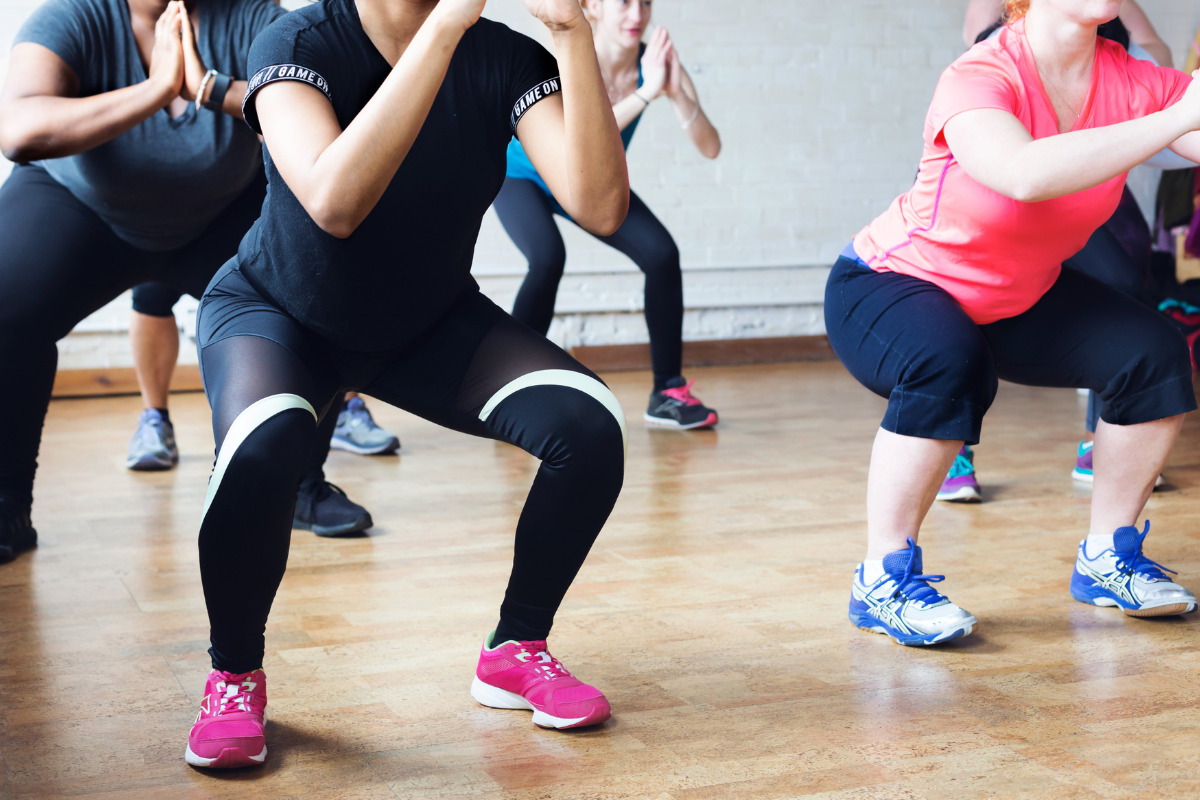Top 5 Exercises to Strengthen Your Pelvic Floor

This post contains affiliate links
Women experience many unique changes as they age and transition through menopause, including the natural weakening of the pelvic floor. This is especially the case for women who have had babies through vaginal delivery. In severe cases, pelvic organ prolapse can occur, a condition that causes the muscles supporting pelvic organs to become loose and allow the organs to drop or press onto the vagina.
Your pelvic muscles play a key role in supporting your uterus, bladder, and bowel, as well as providing structure and support during pregnancy and childbirth. As your pelvic muscles weaken, you may experience an increase in bladder incontinence (ever peed when you sneezed?) and painful intercourse.
Fortunately, research has proven that you can strengthen your pelvic floor muscles by practicing pelvic training. Below are five great pelvic floor strengthening exercises to try at home.
1. Kegels
This exercise is probably the one most women have already heard of before. Kegels are the practice of squeezing, holding, and releasing your pelvic floor muscles. One of the best ways to explain it is to contract your pelvic muscles as if you’re trying to hold in your pee. Contract them, hold for 5 seconds, release for 5 seconds, and repeat. Kegels are an exercise you can do at any time without anyone knowing you’re doing them. For example, while you’re standing and talking to someone, working at your desk, or even sitting and relaxing at home. A good place to start is to do Kegels 3 times per day, for 10 reps at a time.
For real-time guidance, try the award-winning Elvie Trainer. It’s an easy-to-use device and app that gives you feedback to ensure you are performing your kegel exercises correctly and safely.
2. Bird Dog
This one is done on your hands and knees, starting in a tabletop position if you’re familiar with yoga. At the same time, raise your right arm and left leg straight out to the front and back. Slowly return them to the floor. Do this again with the other side and return them to the tabletop position. Continue repeating each side. You can do this for 2-3 sets of 10-15 repetitions, squeezing your glutes and pelvic muscles throughout.
3. Squats
Squats aren’t just for gym rats! Squats are an excellent exercise for strengthening your quads, hamstrings, and glutes, but also your pelvic floor muscles. These can be done with or without added weights or dumbbells, merely using your own body weight. The basic squat can be done by placing your feet hip-width apart, bending your knees, and pushing your butt back as if you’re going to sit down. Be careful not to bend your knees over your toes. Straighten your legs and return to a standing position, repeating this 10-15 times.
4. Bridge
The bridge is an easy exercise that works several muscles, including pelvic, and can be done with no equipment. All you need to do is lie on your back with your feet on the floor and knees at a 90-degree angle. The bridge is done by pushing your pelvis and hips off the ground and up into the air. Hold here for 3-5 seconds and slowly release back to the floor. Try to do a set of 10 and work up to a few sets of 15-20. Make sure to squeeze your pelvic muscles during this exercise.
5. Split Tabletop
This exercise works the inner thighs and pelvic muscles, as well as your core. Lie on your back on the floor with your legs at 90-degree angles in the air, toes pointing at the ceiling. Slowly release your legs out to each side as far as you can go that’s comfortable, and hold them stable with your core muscles. Slowly pull your legs back to the center. Repeat this motion 10-15 times for 2-3 sets.
For more health and fitness tips for midlife, download Midday from the App Store or visit us at Midday.Health.
We curate products to keep you abreast of new technologies, emerging science, and things we think are interesting or cool. Midday is a participant in the Amazon Affiliate Program, a program designed to provide a means for sites to earn fees by linking to Amazon.com. If you purchase a product from Amazon or another affiliate program we participate in, we earn a small commission from qualifying purchases that help us provide information and services to our users. We have not tested these products and can’t validate their claims. We update links when possible, but note that deals can expire and all prices are subject to change. The decision is yours, and whether or not you decide to buy something is completely up to you.
Sign up for more unique women’s health content
By submitting this form, you agree to the Lisa Health Privacy Policy and Terms of Use

